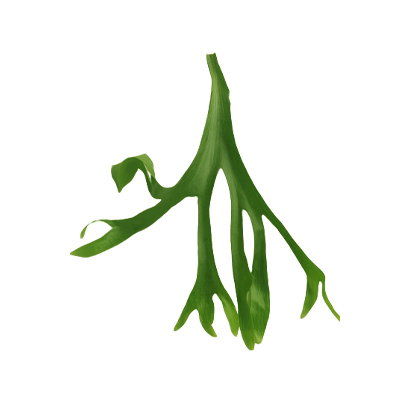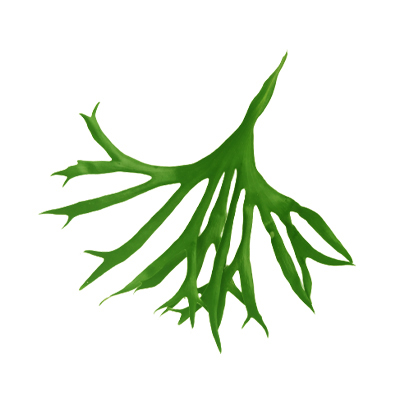Staghorn Fern
Platycerium bifurcatum (Cav.) C.Chr.
Polypodiaceae
Location in our garden
Green House
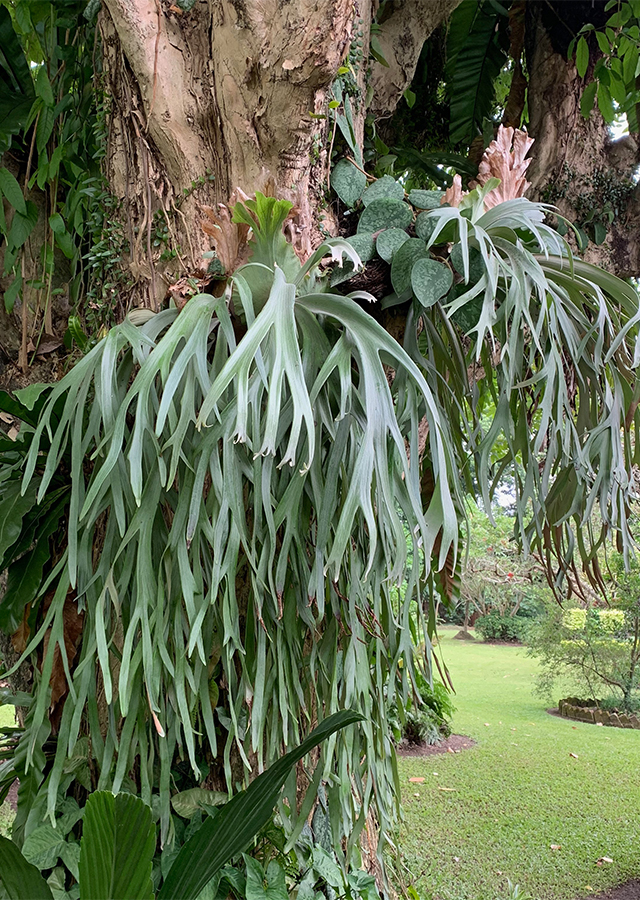
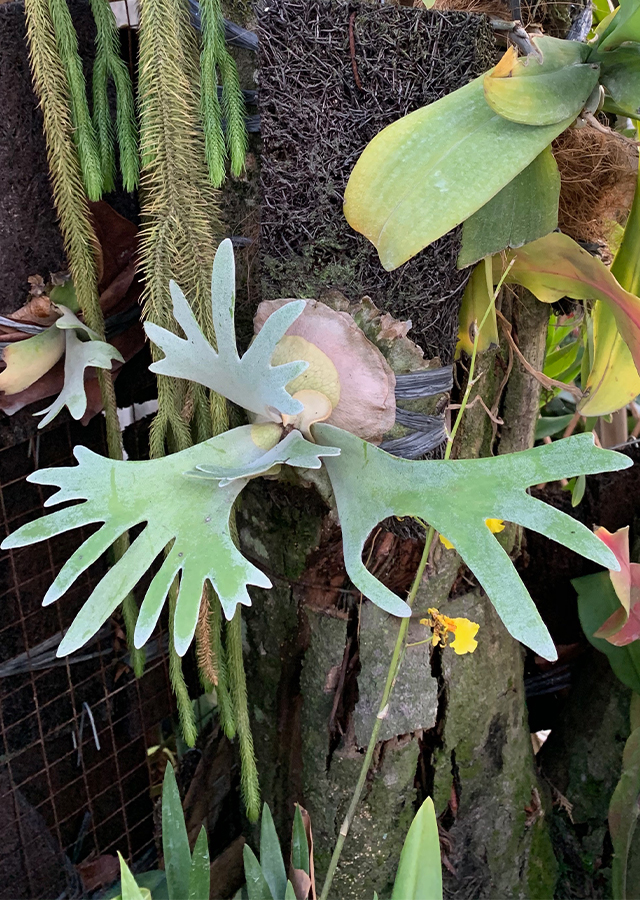
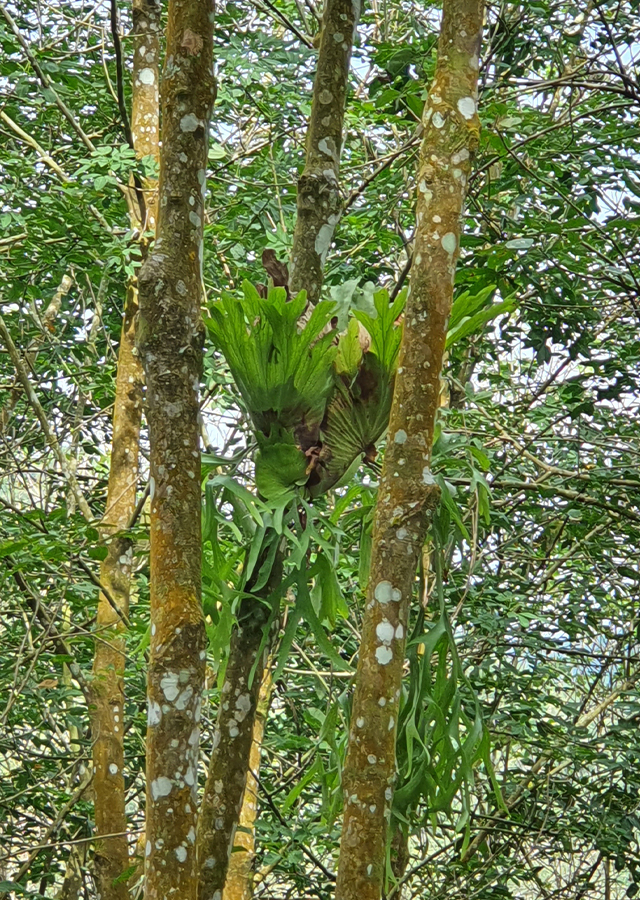
Synonym
Alcicornium bifurcatum (Cav.) Underw.
Platycerium bifurcatum var. normale Domin
Acrostichum bifurcatum Cav.
Habitus
Fern. An evergreen epiphytic fern
Part Used
Leaves
Growing Requirements
Need Shade
Drought Resistant
Habitat
Forest
Overview
It is native to Jawa, whose natural habitat is in forests, especially tropical rainforests such as in Indonesia. Scattered in all parts of the world, except snowy areas and deserts. Often grown as an ornamental plant. There is high demand for Staghorn as an ornamental species in Europe, Australia and the United States.
Vernacular Names
Paku uncal (Sunda-Indonesia), Simbar agung (West Kalimantan-Indonesia), Dapong repolyo (Philippines), Corne d'élan (Franch), Geweih-Farn(German).
Agroecology
It is well adapted to dry conditions and prefers composted leaf mould that is moist and acidic with a pH range from 6.0 to 7.0. It is found from sea-level up to 2,000 m altitude. It grows as an epiphyte in various kinds of forest and open vegetation, moreover also grows in a semi-shaded humid environment with wind protection and is frost-cold and drought tender.
Morphology
- Rhizome - hidden, short, scales 1.5-11 mm ×0.3-1.3 mm, with basally attached or peltate scales.
- Leaves - closely clustered and dimorphic, erect or appressed, sterile base leaves sessile, not articulated to the rhizome, 18-60 cm × 8-45 cm, the apical margin entire to lobed, greyish-green but soon turning brown, margins entire, apex 2-5 times bifurcate, the latter thus appearing to divide in three, the base narrowly wedge-shaped, the lower surface greyish-green, densely covered with stellate hairs; ultimate divisions elongate and the upper surface green, sparsely to densely covered with stellate hairs, .
- Sporangia - The soral patch covers most of the lower surface of the ultimate segments of the fertile leaves, consisting of 1-10 soral patches, sometimes reaching around the sinus of the first fork, sometimes not reaching the apex,with shortly stalked paraphyses.
Cultivation
- Mass propagation is done by tissue culture orgametophyte production on agar.
- Can be easily grown from spores.
- Mature plants develop additional growth centres which can be severed and planted apart.
Chemical Constituents
Saponin, flavonoids, polifenol, phenoliccompounds (myricetin, sinapic acid, galic acid,protocatechuic, p-hydroxybenzoic acid).
Traditional Medicinal Uses
- The leaf extract is reported to have diverse uses such preventing miscarriages in women when taken two months after conception, treatingoedema, coughs and hypertension.
- Antibacterial potency of methanol extract of P. bifurcatum
- using agardilution method has been reported.
- Antioxidant activities of the leaves of P. bifurcatum to minimize oxidativedamage to cells.
- In Nigeria, young leaves of P. bifurcatum are prescribed as a commonantiulcer remedy.
- In Java, Indonesia, the leaves were ground with Foeniculum vulgare Miller(fennel, "adas"), Alyxia reinwardtii Blume ("pulasari") and red onion andapplied to swellings.
- The leaves were used as poultice to treat fevers in the belly.
Part Used
Reference Sources
- Darnaedi, D. & Ngatinem-Praptosuwiryo, T., 2003. Platycerium bifurcatum (Cav.) C. Chr.. In: de Winter, W.P. and Amoroso, V.B. (Editors): Plant Resources of South-East Asia No 15(2): Cryptogams: Ferns and fern allies. PROSEA Foundation, Bogor, Indonesia. Database record: prota4u.org/prosea.
- Royal Botanic Gardens. Kew. Plants of the World Online: Platycerium bifurcatum (Cav.) C.Chr.. https://powo.science.kew.org/taxon/urn:lsid:ipni.org:names:17177460-1#synonyms. 29-06-2020.
